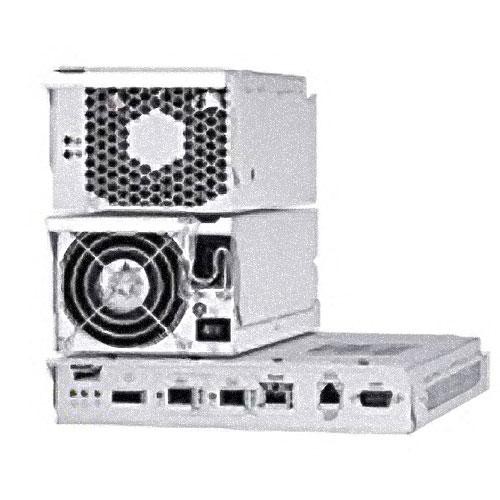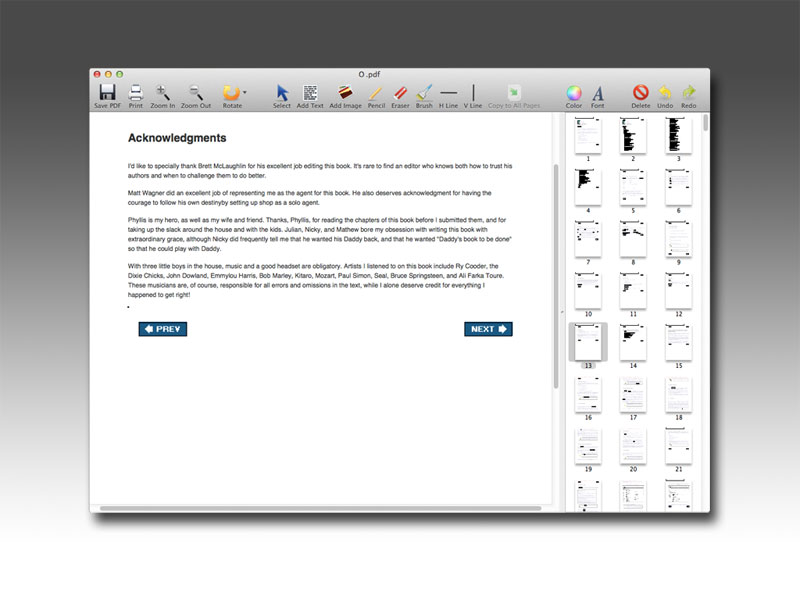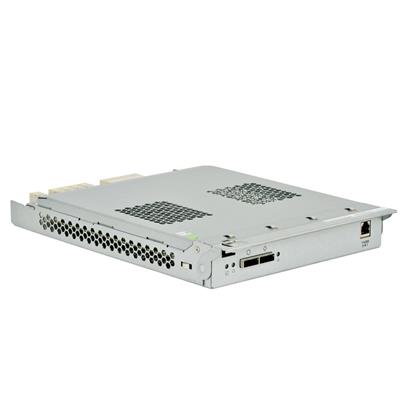Buy Promise Technology VTA3800FDM VTrak A-Class Turnkey SAN File System Solution featuring Dual Controller, 10 Universal Clients, 24 x 4TB 7,200-RPM SAS Drives. Promise VTrak RAID Controllers and SAS-connected Expansion Chassis: Xsan (Metadata and Data) Configuration Script - E5800f + (3) J5600s.
- PROMISE VTrak x30 Series 32TB (16x 2TB SAS) 3U RAID Subsystem - Next Gallery Image PROMISE VTrak x30 Series 32TB (16x 2TB SAS) 3U RAID Subsystem NZ$27,999.00.
- Page 10VTrak Quick Start Guide To set up a serial connection with VTrak: On your Xserve, double-click the ZTerm desktop icon (right). The Local window opens on the desktop. From the ZTerm dropdown menus, choose Settings Connection. Set the Data Rate to 115200 and click the OK button.
The following is from Apple knowledge base article: http://support.apple.com/kb/HT1200
Summary

Configure Promise VTrak RAIDs for best performance using the guidelines in this article. Although Promise VTrak RAIDs may be manually configured, it is recommended that they be configured using the scripts described in this article. Both script and manual configuration steps are provided below.
Note: Xsan-specific configuration scripts configure Revertible Spare Drives. In the event that a drive is replaced, data will be migrated from the Spare Drive to the replacement drive. Performance may be impacted for the duration of the migration procedure.
Promise Vtrak Efd For Mac Os
Configure via script
A. Create the script file
Determine which script you should use from the following list, then click the linked article to get the text of the script. Follow the instructions in the linked article to save the script, then return to this article.
- RAID Controller: Xsan (Metadata and Data)
Configures a RAID Controller that will used as an Xsan volume. Configures arrays to be used as a metadata LUN and two data LUNs. Each Xsan volume must contain one metadata LUN. - RAID Controller: Xsan (Data Only)
Configures a RAID Controller that will used as an Xsan volume. Configures arrays to be used as two data LUNs and one Audio/Scratch LUN“. Use to configure additional data LUNs to an Xsan volume that already has a metadata LUN. - RAID Controllers and SAS-connected Expansion Chassis: Xsan (Metadata and Data)
Configures a RAID Controller and SAS-connected Expansion Chassis that will used as an Xsan volume. Configures arrays to be used as a metadata LUN, four data LUNs and one Audio/Scratch LUN. Each Xsan volume must contain one metadata LUN. - RAID Controllers and SAS-connected Expansion Chassis: Xsan (Data Only)
Configures a RAID Controller and SAS-connected Expansion Chassis that will used as an Xsan volume. Configures arrays to be used as as four data LUNs and two Audio/Scratch LUNs. Use to configure additional data LUNs to an Xsan volume that already has a metadata LUN. - RAID Controllers: Direct Attached
Configures a RAID Controller that will be formatted as a local filesystem such as Mac OS Extended (Journaled) to be accessed by a single computer. - RAID Controllers and SAS-connected Expansion Chassis: Direct Attached
Configures a RAID Controller and SAS-connected Expansion Chassis that will be formatted as a local filesystem such as Mac OS Extended (Journaled) to be accessed by a single computer. - RAID Controllers - 8-Drive Model - Direct Attached
Configures an 8-Drive RAID Controller that will be formatted as a local filesystem such as Mac OS Extended (Journaled) to be accessed by a single computer. - RAID Controllers - 8-Drive Model - Direct Attached with Spares
Configures an 8-Drive RAID Controller that will be formatted as a local filesystem such as Mac OS Extended (Journaled) to be accessed by a single computer. Spare drive is configured to offer higher availablility at the expense of performance. - Controller Module-Only
If your Promise VTrak's Controller Module has been replaced, apply this script to configure the replacement Controller Module for optimal performance.
Fokker 100 digital aviation fsx crack. B. Make drives available for configuration
- Connect to the VTrak RAID via the WebPAM PROe administration tool. If you are not certain what IP Address is assigned to the Promise RAID, refer to the Product Manual. If an alert appears in your Web browser, see this article.
- Authenticate when prompted. If you are not certain what administrator name and password is assigned to the Promise RAID, refer to the Product Manual.
Note: The scripts assume that there are no existing Disk Arrays or Spare Drives configured on the VTrak RAID. Before importing a script, you should delete all existing Disk Array or Spare Drive configurations. Important: Deleting existing Disk Arrays will destroy all existing data on the Disk Array. Ensure that all data has been backed up to an alternate storage device before proceeeding.
To delete existing Disk Arrays
- Select Disk Arrays.
- Click the Delete tab.
- Click (check) the first checkbox under Delete Disk Arrays, which will auto-select all existing arrays in the list.
- Click Submit and then enter CONFIRM in the dialog box.
To delete existing Spare Drives
- Select Spare Drives.
- Click the Delete tab.
- Click (check) the first checkbox under Delete Spare Drives, which will auto-select all existing arrays in the list.
- Click Submit and then enter CONFIRM in the dialog box
C. Import the configuration script
Promise Vtrak Support
- Connect to the VTrak RAID via the WebPAM PROe administration tool. If you are not certain what IP Address is assigned to the Promise RAID, refer to the Product Manual. If an alert appears in your Web browser, see this article.
- Authenticate when prompted. If you are not certain what administrator name and password is assigned to the Promise RAID, refer to the Product Manual.
- Select Administrative Tools.
- Click the Import tab.
- Set the Type field to 'Configuration Script'.
- Populate the Local File Name field with the path to the script, or click the Browse button and select the script you saved previously.
- Click Submit.
- The next page that appears reports if the script was located and if it contains any issues. If there are no error messages, click Next.
This completes the Disk Array and Spare Drive configuration.
Manual configuration
The following are instructions for manually configuring Promise VTrak RAIDs for best performance. You do not need to follow these steps if you used the configuration script method described above.
1. Connect to the VTrak RAID via the WebPAM PROe administration tool. If you are not certain what IP Address is assigned to the Promise RAID, refer to the Product Manual. If an alert appears in your Web browser, see this article.
2. Authenticate when prompted. If you are not certain what administrator name and password is assigned to the Promise RAID, refer to the Product Manual.
Make drives available for configuration
Note: The scripts assume that there are no existing Disk Arrays or Spare Drives configured on the VTrak RAID. Before importing a script, you should delete all existing Disk Array or Spare Drive configurations. Important: Deleting existing Disk Arrays will destroy all existing data on the Disk Array. Ensure that all data has been backed up to an alternate storage device before proceeeding.
To delete existing Disk Arrays
- Select Disk Arrays.
- Click the Delete tab.
- Click (check) the first checkbox under Delete Disk Arrays, which will auto-select all existing arrays in the list.
- Click Submit and then enter CONFIRM in the dialog box.
To delete existing Spare Drives
- Select Spare Drives
- Click the Delete tab.
- Click (check) the first checkbox under Delete Spare Drives, which will auto-select all existing arrays in the list.
- Click Submit and then enter CONFIRM in the dialog box.
300 games cd for vcd players. Configure global settings
- Choose Controllers > Controller 1 > Settings.
- Check the 'Enable LUN Affinity' checkbox.
- Check 'Adaptive Writeback Cache'.
- Uncheck (deselect) 'Host Cache Flushing'.
- Check 'Forced Read Ahead'.
- Click Submit.
- Repeat these steps for Controller 2.
Configure Disk Arrays
Notes:
- Xsan only supports sector values of 512 Bytes.
- When creating Disk Arrays, attempt to assign an equal amount of hard drives to each Controller module by alternating each Disk Array’s Preferred Controller ID value between Controller 1 and Controller 2.
- All settings not described in the following steps should be left at default values.
- The 'Stripe' value should be left at 64KB and the 'Sector' value should be left at 512 Bytes.
Configuring a Two-Drive Xsan Metadata Disk Array
- Select Disk Arrays.
- Click the Create tab.
- Select 'Advanced Configuration'.
- Click Next.
- Assign a Disk Array Alias.
- Check Enable PDM and Enable Media Patrol.
- Select two disks. Note: If the Promise VTrak contains Serial Attached Storage (SAS) drives, it is suggested that these be used to store Xsan metadata.
- Click Next.
- Assign an Alias name.
- Select RAID Level 1.
- Set Readpolicy to ReadCache.
- Set WritePolicy to WriteThru.
- Set Preferred Controller ID either 1 or 2.
- Click Submit.
Configuring a Six-Drive Xsan Data Disk Array
- Select Disk Arrays.
- Click the Create tab.
- Select 'Advanced Configuration'.
- Click Next.
- Assign a Disk Array Alias.
- Check Enable PDM and Enable Media Patrol.
- Select six disks.
- Click Next.
- Assign an Alias name.
- Select RAID Level 5.
- Set Readpolicy to ReadAhead.
- Set WritePolicy to WriteBack.
- Set Preferred Controller ID either 1 or 2.
- Click Submit.
Configuring an Eight-Drive Direct-Attached Disk Array
- Select Disk Arrays.
- Click the Create tab.
- Select 'Advanced Configuration'.
- Click Next.
- Assign a Disk Array Alias.
- Check Enable PDM and Enable Media Patrol.
- Select eight disks.
- Click Next.
- Assign an Alias name.
- Select RAID Level 5.
- Set Readpolicy to ReadAhead.
- Set WritePolicy to WriteBack.
- Set Preferred Controller ID either 1 or 2.
- Click Submit.
The disk should now be visible in Disk Utility, which can be used to format the drive with a local filesystem such as Mac OS Extended (Journaled).
Configuring Spare Drives
Note: If your workflow requires consistent performance during RAID Drive downtime, it is advised that Spare Drives be configured.
- Select Spare Drives.
- Click the Create tab.
- Set Spare Type to Global if the Spare Drive is available to all Disk Arrays or select Dedicated is the Spare Drive is available to a specific Disk Array.
- Check Revertible if you would like data to be migrated from the Spare Drive to a replacement drive. (Performance may be impacted for the duration of the migration procedure.)
- Select the Physical Drive(s) that will be configured as Spare Drives.
- If the Spare Type is Dedicated, select to which Disk Array the Spare Drive is dedicated.
- Click Submit.


Hello Paradeshi:
It is possible to have multiple computers accessing the VTrak at the same time. If you have a dual port card in your Mac, you will need to connect each computer to both controllers in the back of the VTrak. Each controller will have 4 fiber channel ports. This should allow for both computers to see the volume.
Torrent crack zenon.
NOTE: The VTrak does not control which computer has read and write access to the volume. If both computers have direct access to the volume, it will cause corruption. You will need SAN software to manage write access to the volume to prevent this. A couple of examples for SAN Software are XSan or SANmp.
The other route you can go is to have a volume isolated to each server. This will prevent the computers from overwriting the same areas of data that can cause the corruption.
Promise Vtrak Efd For Machine
If you would like more information about setting up the VTrak to work with multiple hosts, you can call Promise Technical Support at 1 (408) 228-1500. Our VTrak line is open 24x7.

Best Regards
Kris

Promise Technical Support
Apr 27, 2013 6:01 PM